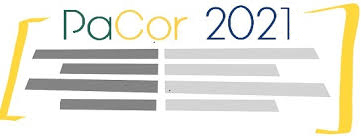Parallel Corpora: Creation and Applications

International Symposium PaCor 2021
Vitoria-Gasteiz, 23, 24 and 25 June 2021
The research group TRALIMA/ITZULIK GIC IT 1209-19 of the University of the Basque Country/Euskal Herriko Unibertsitatea (UPV/EHU) is pleased to organise the III International Symposium on Parallel Corpora, PaCor 2021. This conference will be carried out ONLINE on 23, 24, and 25 June 2021.
PaCor 2021 aims to contribute to the scientific dissemination initiated by the research group SpatiAlEs, from the University of Santiago de Compostela, in 2016, later reinforced by the Instituto Universitario de Lenguas Modernas y Traductores (ULMYT), at the University Complutense of Madrid, in 2018. TRALIMA/ITZULIK together with the abovementioned research groups, and many others, take part in CORPUSNET. The goal of this network is the development of (parallel or comparable) corpus-based tools, applications and resources to satisfy needs in the realms of research, teaching and/or intercultural communication (http://corpusnet.unileon.es/).
Parallel corpora creation and exploitation are possible thanks to the collaboration of linguists, (computational) engineers, statisticians and a variety of language users (researchers, learners, translators, among others). While the latter report their needs for language use, as well as, problems or challenges in cross-cultural communication, the former describe languages, at different levels, to observe what should be done to meet each ultimate purpose, thus defining a possible solution. It is the engineers and statisticians who give it shape by developing tools whose usefulness and usability be guaranteed. This interdisciplinary collaboration is as necessary as complex and fraught with challenges. This is indeed the case given the increasing range of language applications, not only among various languages but also in a variety of domains.
Originally, the aim of PaCor is twofold: first, to identify challenges, from a variety of perspectives including contrastive linguistics and translation, to name a few, with the intention of extending applications to solve them; and 2) to provide a platform for presentation of projects on parallel corpora where Spanish is the pivot language. We hope this third edition adds on to the knowledge gained in previous editions, not only by giving awaiting answers but also by raising new questions that, altogether, enhance corpus linguistics in general and parallel corpora in particular. To this end, we would like PaCor 2021 to pay special attention to parallel corpora that feature, at least, one minority language.
